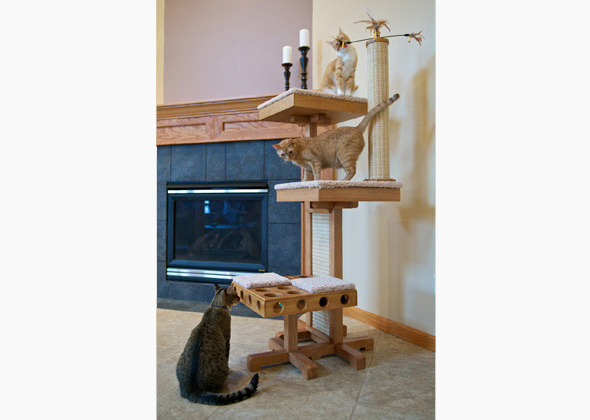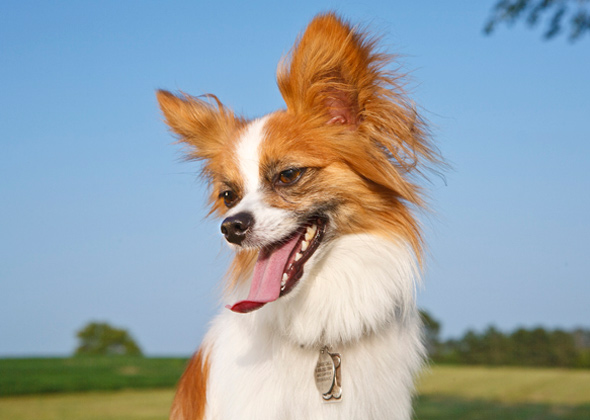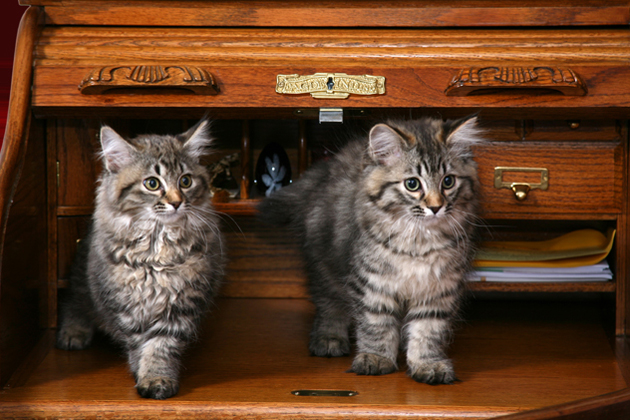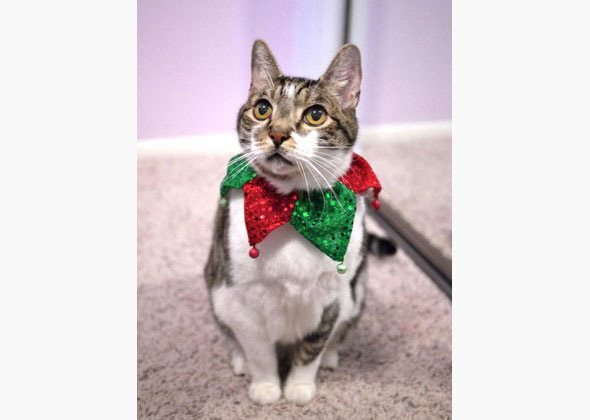Feeding the Diabetic Cat
Published on November 18, 2013

What Is the Best Food for a Diabetic Cat?
Cats are true obligate carnivores and as such have a very high protein requirement and an almost nonexistent carbohydrate requirement.
Cats are designed to consume foods that are high in protein, moderate in fat and very low in carbohydrates. The following composition is ideal:
- 50 percent (or greater) of calories from animal-based protein
- 20-45 percent of calories from fat
- 1-2 percent of calories from carbohydrates
- Rich in water (approximately 70 percent by weight)
When referring to commercial cat food, this ideal composition will only be found in canned cat food formulas. Most dry foods are not low enough in carbohydrates. Additionally, dry foods usually contain plant-based protein and are too low in overall protein to satisfy a cat’s high protein requirement. Therefore, dry foods are not generally recommended for diabetic cats.
It is well established that the ideal feline diet — especially to achieve diabetic remission — is a canned high-protein, low-carbohydrate diet.
What Is a Low-Carb Diet?
A low-carbohydrate diet is one that provides less than 10 percent of the total calories as carbohydrates.
Some cats will have adequate control of their diabetes on higher-carbohydrate diets, while others may require further restriction to 5 percent of the calories as carbohydrates. In general, the lower the carbs the better for excellent diabetic regulation.
Unfortunately, carbohydrate information is not readily available on cat food packaging. The guaranteed analysis on most packaging contains very limited information, most of which is unhelpful to cat owners. Cat owners can contact pet food companies for more detailed information on the carbohydrate content of available diets. It is important to request the carbohydrates be expressed as a percent of metabolizable energy (percent ME). This gives you the actual percent of calories coming from carbohydrates. It is best to select a food with less than 10 percent of calories (10 percent ME) coming from carbohydrates.
Are Prescription Diets Necessary?
Many veterinarians recommend prescription diabetic foods. Although many cats do well on these foods, some of these foods are formulated with more than the recommended 10 percent ME carbohydrates and may not be ideal in every situation nor the best diet to achieve diabetic remission. Additionally, some clients cannot afford the extra monthly financial commitment that comes with a prescription diet.
The good news is that prescription diets are not necessary to successfully regulate a diabetic cat. Many high-quality commercial cat foods are made with less than 10 percent ME carbohydrates and are appropriate for diabetic management. You must work with your vet to determine your cat’s best dietary solution.
Starting a New Food
Although you and your vet may decide on a suitable diet for your cat, a food must be palatable to your cat in order to be successful. Diabetic cats must not miss meals, and they must consistently eat the same type and amount of food every day for the best possible regulation. If your cat does not appear to like a new food, another option will be needed. If your cat has always eaten dry food, a transition to canned food can be challenging, but it can be done. There are several resources available to help with this transition.
Weight Loss and Diabetic Remission
The calorie needs of your cat are the next priority in successful diabetic management. Obesity is one of the most common feline health threats and is a major risk factor for the development of diabetes in cats. Your vet will help you determine your cat’s ideal body weight and estimate how many calories he should eat each day in order to lose weight slowly and safely.
Cats are unique in that many revert to a non-diabetic state after switching to an appropriate diet and starting insulin treatment. If you are not monitoring blood or urine glucose levels routinely, remission can go unnoticed and life-threatening hypoglycemia may occur. Speak to your veterinarian about the best time and way to monitor for remission in your cat.
More on Vetstreet.com:
· 7 Foods to Never Feed Your Cat





